Analysis
Meet Professor Nenibarini Zabbey, The Champion Of Ogoniland’s Clean-Up Efforts
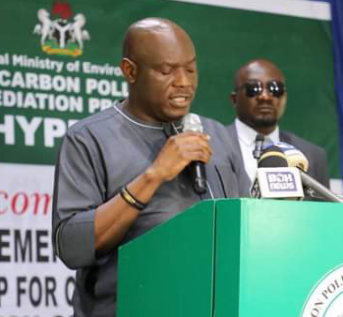
Leading HYPREP’s Charge Towards A Cleaner Ogoniland:
Prof. Nenibarini Zabbey, the reinstated Project Coordinator of the Hydrocarbon Pollution Remediation Programme (HYPREP), has consistently demonstrated his commitment to environmental stewardship and sustainable development in the Niger Delta region. With a proven track record in environmental management, Prof. Zabbey holds a Ph.D. in Environmental Science from the University of Port Harcourt and has consistently demonstrated his expertise in pollution remediation and sustainable development.
As a Professor of Hydrobiology, biomonitoring and restoration ecologist, estuarine ecologist, coastal management consultant, ecotoxicologist, and environmental impact assessment consultant, Prof. Zabbey brings a wealth of knowledge and experience to the forefront of environmental management in the Niger Delta region. His extensive
background in aquatic ecology, biomonitoring, and restoration ecology has provided valuable insights into managing ecosystems sustainably.
Prof. Zabbey’s impressive credentials include certificates in Ecology and Taxonomy of Tropical Polychaetes, Philosophy of Biological Systematics, Creation and Restoration of Wetland, River Restoration, Waste Management, and 210 Po Radiochemistry and Nuclear Applications related to Marine Pollution Studies. He is a member of several professional organizations, including the British Ecological Society, Society for Ecological Restoration (SER), International Association for Impact Assessment (IAIA), Nigerian Environmental Society (NES), Fisheries Society of
Nigeria (FISON), and Association for the Sciences of Limnology and Oceanography (ASLO).
Prof. Zabbey’s work has focused on the Niger Delta water-web, providing useful information on the region’s aquatic ecology and insights for managing the ecosystems sustainably. He has received the Association of the Sciences of Limnology and Oceanography (ASLO) 2022 Ruth Patrick Award for his research and engagement with a critical impact on the recovery of the Niger Delta ecosystem from oil spills and environmental justice for affected communities.
Under Professor Zabbey’s leadership, HYPREP has achieved significant milestones in environmental remediation and restoration, livelihood restoration, provision of potable drinking water, peacebuilding, public health, and special interventions.
In environmental remediation and restoration, HYPREP initiated the Mangrove Revegetation Project in Bomu, mobilizing resources for shoreline cleanup and training over 2,000 community workers in shoreline remediation techniques accredited by the International Maritime Organization (IMO). These efforts have significantly contributed to restoring the fragile ecosystems in Ogoniland.
In livelihood restoration, HYPREP implemented various initiatives, including training 90 Ogoni youths in mangrove nursery planting and providing soft grants for setting up nurseries. The project also supported existing Small and Medium Scale Enterprises (SMEs) in Ogoniland, providing business support funds to 60 SMEs and training 40 market women. These initiatives have empowered the local population, promoting economic sustainability.
HYPREP also mobilized and commissioned water scheme projects, commencing the construction of 14 new water schemes to be reticulated across 58 communities in Ogoniland, with five water schemes already commissioned, benefiting 18 communities. This initiative has provided much-needed access to clean drinking water, improving public health and quality of life in the region.
Recognizing the importance of peace and stability for sustainable development, HYPREP engaged in peacebuilding activities, fostering dialogue and cooperation among various stakeholders. This has been instrumental in creating a conducive environment for the successful implementation of remediation projects. In public health, HYPREP made significant contributions, including the renovation of radiology units, theatres, and laboratories in key hospitals and the installation of solar energy systems. The project also oversaw the construction of a Cottage Hospital in Buan, Khana Local Government Area, and the Ogoni Specialist Hospital in Kpite, Tai Local Government Area. Additionally, a large-scale medical outreach was conducted, providing essential health services to the local population.
Special interventions under Professor Zabbey’s leadership included the commencement of the Ogoni Power Project and the construction of the Centre of Excellence for Environmental Remediation (CEER), which is currently at 60% completion.
Under Zabbey’s leadership, HYPREP has made significant strides in the Ogoni cleanup project. His leadership has been marked by a contextual approach, innovative solutions, and community engagement. He has consistently emphasized the need for contextual solutions to address the unique environmental challenges facing Ogoniland. His approach acknowledges the importance of localized strategies in tackling global environmental problems. He has introduced innovative methods, such as the integration of technology and innovation, to drive the cleanup
efforts and promote sustainable development in the region. Zabbey’s dedication to engaging with the local community, stakeholders, and regulators has created a sense of ownership and inclusivity, essential for the project’s success.
As the reinstated HYPREP coordinator, Prof. Zabbey faces the daunting task of completing the Ogoni cleanup project. The challenges ahead include scaling up remediation efforts, sustaining community support, and addressing emerging challenges. Prof. Zabbey’s dedication to environmental stewardship and sustainable development in the Niger Delta region is unshakeable. His leadership will be crucial in driving the project forward, ensuring a cleaner, healthier future for the Ogoni people and the environment.
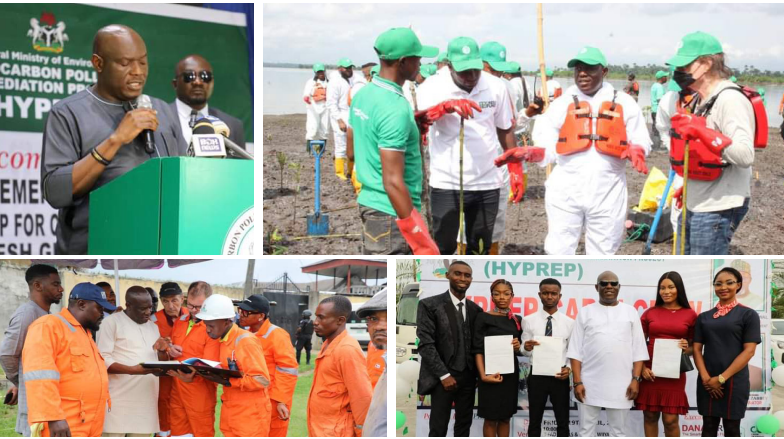
Analysis
Justice for Ochanya Ogbanje, by Boniface Ihiasota
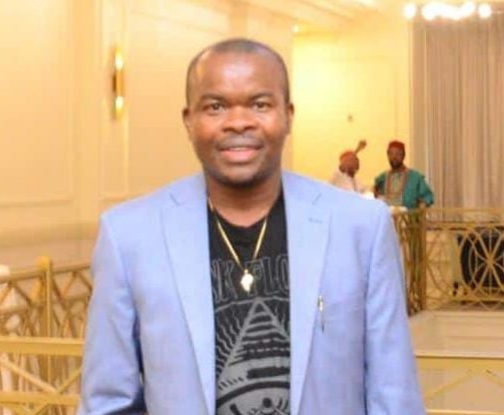
Justice for Ochanya Ogbanje, by Boniface Ihiasota
In a country where injustice too often becomes routine, the story of Ochanya Ogbanje still stands out — haunting, unforgettable, and deeply symbolic of our collective moral failure. Hers is not just the story of a 13-year-old girl from Benue State; it is a painful reminder of what happens when society normalises silence in the face of cruelty.
Ochanya was a bright and hopeful student of the Federal Government Girls College, Gboko, until her life was brutally cut short on October 17, 2018. She died from complications arising from vesicovaginal fistula (VVF), a condition caused by repeated sexual assault. The perpetrators were not strangers lurking in dark alleys but they were family: her guardian, Andrew Ogbuja, a lecturer at the Benue State Polytechnic, and his son, Victor.
Reports later revealed that Ochanya had endured years of sexual violence under their roof in Ugbokolo, Okpokwu Local Government Area. When she finally broke her silence, her body had already borne more trauma than most could imagine. She was admitted to the Federal Medical Centre, Makurdi, where she died a few days later.
Her death sparked outrage. Nigerians, united by collective grief, demanded accountability under the banner of #JusticeForOchanya. Civil society organisations, women’s rights groups, and lawyers mobilised nationwide. For once, it seemed the system would act.
But seven years later, justice remains a mirage.
In April 2022, the Benue State High Court acquitted Andrew Ogbuja, the main suspect, of rape and culpable homicide, citing insufficient evidence. His son, Victor, remains at large. Their matriarch, Felicia Ogbuja, was convicted for negligence and handed a few months jail term, a slap on the wrist that mocked the gravity of the crime.
How does a case so clear, so public, and so painful collapse under the weight of “technicalities”?
The answer lies in a justice system ill-equipped to protect the weak. In Nigeria, sexual and gender-based violence is often treated as private misfortune rather than public crime. According to UNICEF, one in four Nigerian girls experiences sexual violence before the age of 18, but only 4.8 per cent of reported cases ever result in conviction. This statistic is not just a number, it is a damning verdict on our collective failure to protect children like Ochanya.
The legal process that followed her death exposed deep cracks in Nigeria’s justice architecture. Investigations were slow, evidence poorly handled, and witnesses inadequately protected. There were reports of institutional interference, procedural loopholes, and social pressures that diluted the pursuit of truth.
In a functioning system, child sexual assault cases receive priority attention. Evidence is collected within hours, witnesses are shielded from intimidation, and survivors (or their families) are supported with counselling. In Nigeria, the reverse is often the case. Victims are shamed, families are ostracised, and offenders are shielded by status or influence.
But beyond the courtroom, Ochanya’s story raises uncomfortable questions about our society. How many teachers, neighbours, or family friends suspected abuse but said nothing? How many community elders preferred to “settle it quietly”? Silence, in such cases, becomes complicity.
This culture of silence is what sustains impunity. The Child Rights Act of 2003 should have been our strongest weapon against such abuse. Yet, more than two decades later, 11 states, mostly in northern Nigeria have still not domesticated it. Even in states where it exists, enforcement remains weak. Without strong institutions and consistent public pressure, laws become mere words on paper.
From the Diaspora, where systems treat every child’s safety as sacred, it is painful to watch Nigeria stumble repeatedly over the same failures. In countries like Canada or the United Kingdom, a single case like Ochanya’s would trigger sweeping investigations, public apologies, and institutional reform. In Nigeria, it barely sustains public attention for a month. That indifference is deadly.
Justice for Ochanya must go beyond hashtags and memorials. It requires deliberate institutional reform from how police handle sexual crimes to how courts prioritise them. Benue State must reopen the case, locate Victor Ogbuja, and review the 2022 acquittal in light of fresh evidence or procedural lapses. The Federal Ministry of Women Affairs and NAPTIP must coordinate efforts to ensure that child protection is not just a policy goal but a daily practice.
Civil society must also remain vigilant. Organisations like WACOL, FIDA Nigeria, and The Coalition Against Rape and Sexual Violence (CARSV) have done commendable work, but they need sustained funding, collaboration, and public support to continue their advocacy.
Ultimately, justice for Ochanya is not about vengeance, it is about restoring faith in our humanity. Her death should provoke national soul-searching: how many more Ochanyas are suffering in silence across Nigeria today?
Every child deserves protection, dignity, and justice. The measure of any nation’s greatness lies not in its economic strength or political power, but in how it treats its most vulnerable.
Analysis
Now That Tinubu Has Listened … by Alabidun Shuaib AbdulRahman
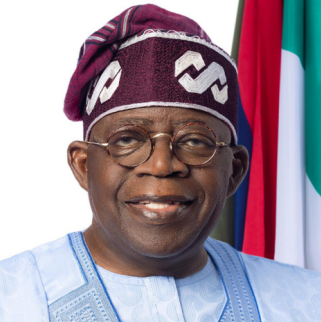
Now That Tinubu Has Listened … by Alabidun Shuaib AbdulRahman
When President Bola Ahmed Tinubu announced, earlier in October 2025, that 175 individuals had been granted state pardon, clemency, or commutation of sentences, the news was framed as an act of justice, compassion, and correction. It was meant to mark a milestone in the President’s promise of a “renewed hope” administration, one that tempers justice with mercy, and offers a second chance to the reformed.
But in the days that followed, that noble gesture swiftly morphed into a national debate. The backlash was intense, the criticisms unrelenting, and the public mood unmistakably angry. What began as a constitutional exercise soon appeared, to many Nigerians, as a moral misjudgment. And by the end of October, the President was forced to reverse parts of the decision, trimming the list, clarifying the scope, and pledging a review of the process.
Now that Tinubu has listened, the question that must be asked is: What has he really done? And more importantly, what has the entire episode revealed about power, public trust, and governance in Nigeria?
Interestingly, the presidential clemency, announced on October 12, came through the Ministry of Justice and covered 175 individuals across various categories, including pardons, commutations, and reprieves. The list, compiled by the Presidential Advisory Committee on the Prerogative of Mercy (PACPM), included a mix of convicts serving jail terms for drug trafficking, illegal mining, fraud, and violent crimes, alongside some posthumous pardons for historical figures such as nationalist Sir Herbert Macaulay and military officer Major-General Mamman Jiya Vatsa.
The official statement from the Presidency said the exercise aimed to “decongest correctional facilities and promote restorative justice,” in line with Section 175 of the 1999 Constitution. It added that the beneficiaries were selected after “due consideration of factors such as age, ill health, good conduct, and evidence of reformation.”
But almost immediately, Nigerians began to ask: Who decides what qualifies as reformation? Were victims consulted? And how do you justify extending clemency to persons convicted of drug-related and violent crimes in a country still reeling under the weight of insecurity, substance abuse, and moral decline?
Social media erupted in outrage. Civil society groups issued statements condemning the exercise as tone-deaf and insensitive. Legal experts questioned the criteria used. Families of victims expressed disbelief that individuals convicted of offences like armed robbery and homicide could be released or have their sentences reduced without public consultation. The backlash was swift and brutal.
In a nation, moral-wise, already struggling with eroded trust in institutions, Tinubu’s clemency decision struck a nerve. Critics argued that mercy, though constitutional, must not be exercised in a way that undermines justice or public confidence.
For many Nigerians, the pardon list symbolised the very thing they feared about governance, a system that protects the powerful while ignoring victims.
Several high-profile inclusions stirred the controversy. Among those initially listed were convicts serving long sentences for drug trafficking, one for cocaine importation, and another for illegal mining, crimes that continue to destabilise communities and the economy. The perception was that Tinubu’s clemency ignored the gravity of the offences and the broader social harm they caused.
Public intellectuals and editorial boards joined the fray. The Punch editorial of October 24th described the move as “reckless leniency,” arguing that it “trivialises justice and weakens deterrence.” Others accused the government of seeking cheap populism through arbitrary mercy.
Facing a public rage, President Tinubu’s team scrambled to regain control of the narrative. On October 29, just over two weeks after the initial announcement, the Presidency issued a revised statement.
The revised list, according to The Cable and Channels TV, was trimmed from 175 names to about 120. Persons convicted of serious crimes, including kidnapping, armed robbery, human trafficking, large-scale drug trafficking, and unlawful possession of firearms were either removed entirely or had their full pardons converted into partial sentence reductions.
The Presidency clarified that the revision followed “a fresh security and legal review” by the Attorney-General of the Federation and that the decision was taken “to be sensitive to the feelings of victims and society at large.”
It was also announced that the Secretariat of the Presidential Advisory Committee on the Prerogative of Mercy would henceforth operate under the Federal Ministry of Justice, rather than the Office of the Secretary to the Government of the Federation, to ensure “greater legal oversight and due process.”
While the reversal calmed the outrage, it raised deeper questions about the integrity of governance processes. How did such a controversial list pass through layers of bureaucratic scrutiny before reaching the President’s desk? And why did it take public uproar for corrections to be made? Tinubu’s reversal, though commendable, underscored a reactive style of governance that bends to outrage rather than pre-empting it through consultation and moral foresight.
In fairness, listening to public sentiment is not weakness, it is a democratic strength. Tinubu deserves credit for acknowledging the outcry and acting promptly. But the larger issue is systemic. The episode exposed the opaque nature of Nigeria’s clemency system. The Presidential Advisory Committee on the Prerogative of Mercy operates largely behind closed doors, with minimal public oversight. There is no clear national framework defining who qualifies for mercy, how victims’ perspectives are integrated, or what accountability measures follow a pardon.
In contrast, countries like South Africa, Ghana, and Kenya have more transparent systems. In South Africa, for instance, clemency applications are published publicly, judicial advice is sought, and reasons for each decision are documented. These procedures protect both the President and the public from perceptions of bias or impunity. Nigeria lacks such guardrails, leaving presidential mercy vulnerable to political manipulation or poor judgment.
If Tinubu truly wishes to turn this episode into a learning moment, the next step must be institutional reform. A National Clemency Policy should be developed under the Ministry of Justice, detailing eligibility criteria, consultation procedures, and exclusions. Certain crimes such as terrorism, kidnapping, rape, large-scale corruption, murder, drug-trafficking and violent offences should be explicitly barred from pardon. Victims’ rights should also be central to the process, ensuring that their pain is neither ignored nor overridden by political convenience.
Moreover, post-pardon monitoring should be introduced to ensure that beneficiaries truly reintegrate into society as reformed citizens. Without such mechanisms, clemency risks becoming a revolving door for repeat offenders, weakening public trust and emboldening criminality. Mercy, when detached from accountability, is indistinguishable from impunity.
The deeper implication of Tinubu’s reversal lies in what it says about public trust. Nigerians are weary of governance that appears tone-deaf to moral and social realities. Every decision that seems to favour the powerful or the undeserving erodes faith in the system. For years, citizens have watched politicians, officials, and well-connected individuals escape justice through legal technicalities or political cover. The clemency controversy reopened old wounds, reminding many of a recurring theme: that justice in Nigeria is too often a privilege, not a right.
Tinubu’s decision to review the list, therefore, must mark more than damage control; it must signal a renewed commitment to principled governance. Listening is good, but leading is better. A president should not have to wait for outrage to do what is right. Leadership demands foresight, the moral clarity to anticipate public reaction and align decisions with the nation’s conscience.
The lesson from this controversy is clear. Mercy, when rightly exercised, strengthens justice; but when misused, it trivialises it. The prerogative of mercy was never meant to serve as a political tool or public relations gesture. It exists to balance the scales of justice when the law, in its rigidity, risks losing its humanity. For it to achieve that noble purpose, it must be guided by transparency, fairness, and integrity.
Now that Tinubu has listened, he stands at a crossroads. He can either let this controversy fade as another episode in Nigeria’s long history of public uproar and government retreat, or he can seize it as a turning point, one that ushers in a more accountable, morally grounded system of justice. The path he chooses will define not just his presidency but also the moral tone of governance in the years to come.
The clemency debate, at its core, was never about law alone. It was about values, about what kind of country Nigeria wants to be: one that prioritises compassion with conscience or one that mistakes pardon for weakness. The President’s reversal was necessary, but the journey toward reform has only just begun. Nigerians have spoken; Tinubu has listened. The next challenge is to act not for applause, but for posterity.
Alabidun is the Editor of Diaspora Watch Newspapers and can be reached via alabidungoldenson@gmail.com
Analysis
Tinubu’s Policy Somersaults and the Search for Economic Direction
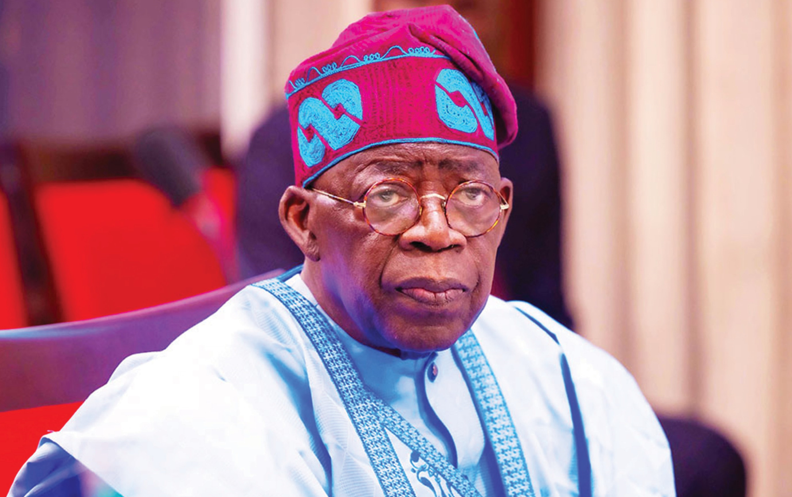
Tinubu’s Policy Somersaults and the Search for Economic Direction
By Alabidun Shuaib AbdulRahman
When President Bola Ahmed Tinubu declared “subsidy is gone” on May 29, 2023, he triggered not just applause but also anxiety. The bold announcement, made even before he settled into office, set off a chain reaction that would define his presidency. Nearly 17 months later, what stands out is not just the courage of his decisions but the inconsistency of their execution, a troubling pattern of policy somersaults that have left Nigeria’s economy oscillating between reform and relapse.
The Tinubu administration came into power on the promise of bold economic transformation. It pledged to end wasteful subsidies, unify the exchange rate, overhaul the tax system, and attract investment. Yet, the implementation of these policies has often been marked by haste, reversals, and contradictions, leaving citizens to bear the brunt of experimentation without a clear safety net.
Few policies have shaped the Tinubu era like the removal of fuel subsidy. The logic was sound: the Nigerian government spent over ₦4.7 trillion on subsidies in 2022 alone, according to the Nigeria Extractive Industries Transparency Initiative (NEITI), making it more than the federal budgets for health and education combined. Eliminating it, Tinubu argued, would free up funds for infrastructure and development.
However, the rollout was chaotic. Within weeks, the average petrol price jumped from below ₦200 per litre to ₦617 at major Nigerian National Petroleum Company Limited (NNPCL) stations by July 2023. The National Bureau of Statistics (NBS) later confirmed that the average national retail price surged from ₦238.11 per litre in May 2023 to ₦626.21 by September 2023 — a 226 percent increase in just four months.
By May 2024, NBS data showed another spike, with petrol averaging ₦769.62 per litre nationwide, and even higher in states like Taraba and Rivers. In some private stations in Lagos and Ibadan, prices exceeded ₦850 per litre by late 2024.
The economic consequences were immediate. Transport costs tripled, food inflation soared, and small businesses struggled to survive. What made matters worse was the creeping suspicion that the government had quietly reintroduced a “hidden subsidy.” Independent data from industry analysts revealed that as of mid-2024, the landing cost of petrol was about ₦1,200 per litre, yet it sold for roughly ₦700, suggesting that the federal government was once again absorbing part of the cost.
This backdoor return of subsidy, after its public burial, unapologetically exposed a policy contradiction. The administration that prided itself on fiscal discipline was once again subsidizing consumption, this time without transparency.
Again, Tinubu’s decision to unify the exchange rate and allow the naira to float was meant to end years of distortion in Nigeria’s foreign exchange market. In June 2023, the Central Bank of Nigeria (CBN) merged multiple exchange windows, and the naira initially traded at around ₦750 per dollar.
But the reform quickly turned into a free fall. By September 2024, the naira had tumbled to over ₦1,600 per dollar in the parallel market. In October 2025, Reuters reported it hovering between ₦1,455 and ₦1,475 at the official Investors and Exporters window, a sign that despite the “float,” the CBN had resumed active interventions.
The result was predictable: imported goods became unaffordable, inflation climbed above 30 percent, and investor confidence weakened. Nigeria’s inflation officially stood at 24.23 percent in March 2025, according to the NBS, but food inflation was far higher, eroding household purchasing power.
The policy’s intent to attract foreign inflows was lost amid uncertainty. Businesses couldn’t plan; manufacturers couldn’t price goods; and citizens, already hit by petrol costs, faced a depreciating currency that made survival harder by the month.
Also, in a bid to expand revenue, the Tinubu government launched an ambitious tax reform agenda, establishing the Presidential Committee on Fiscal Policy and Tax Reforms led by Taiwo Oyedele. The committee’s work was well-received, projecting an effort to simplify Nigeria’s complex tax regime and improve collection efficiency.
But at the same time, the government and its agencies imposed new taxes and levies that contradicted the reform spirit. Excise duties on beverages increased, Customs raised import tariffs, and several states introduced new consumption taxes. Manufacturers, already reeling from exchange-rate pressures and high energy costs, began to shut down or relocate.
The Manufacturers Association of Nigeria (MAN) warned in mid-2024 that over 30 percent of its members were operating below capacity, citing rising input costs and multiple taxation. The government’s short-term revenue drive, critics argue, is strangling the very industries that could generate sustainable growth.
Furthermore, in April 2024, the government approved an electricity tariff hike for “Band A” customers, from ₦68 to ₦225 per kilowatt hour, claiming it affected only those receiving at least 20 hours of power daily. But within weeks, public outcry forced a partial reversal. The Minister of Power, Adebayo Adelabu, and the regulatory commission issued conflicting statements, leaving investors uncertain and consumers angry.
The pattern was similar in labour relations. After months of delay, negotiations for a new minimum wage ended in confusion. A proposed ₦70,000 wage was announced, withdrawn, and then reintroduced and yet to be fully implemented across. Each cycle of promise and reversal erodes credibility and deepens public frustration.
To cushion the subsidy shock, the federal government announced a ₦500 billion palliative package, including cash transfers and food distribution. But implementation was chaotic. Governors disagreed on sharing formulas, distribution was politicized, and many citizens reported being left out.
Similarly, the much-publicized student loan scheme, initially announced for September 2023 was delayed for nearly a year, suspended, then relaunched in mid-2024. The repeated stop-start pattern has become emblematic of Tinubu’s governance style: bold announcements followed by administrative bottlenecks.
Tinubu’s reform instinct is not the problem; his reform management is. The administration must move from ad hoc responses to structured execution. Nigeria cannot afford further policy confusion; stability and clarity must now define governance.
First, the President should rebuild coordination within his economic team. The CBN, Ministry of Finance, and Budget Office must speak with one voice. Economic policy cannot thrive when officials contradict one another.
Second, transparency must replace opacity. Nigerians deserve to know how much is spent on fuel subsidy, how forex is allocated, and how palliatives are distributed. Publishing monthly reports on fiscal and monetary interventions would restore trust.
Third, government must prioritize production over taxation. Incentivize manufacturing, reduce energy bottlenecks, and support SMEs through credit facilities. Expanding the economy’s productive base will yield more revenue than squeezing existing taxpayers.
Fourth, social protection needs reengineering. Palliatives should be digital, data-driven, and corruption-proof. The student loan scheme must be managed transparently, not politicized. The poor cannot remain collateral damage in every policy transition.
Finally, President Tinubu must embrace patience. Sustainable reform is not achieved through shock therapy but through gradual, sequenced policies backed by strong institutions. The temptation to reverse decisions under pressure should give way to evidence-based adjustments.
Alabidun is the Editor of Diaspora Watch Newspapers and can be reached via alabidungoldenson@gmail.com
-

 News6 days ago
News6 days agoTrump Threatens Military Action in Nigeria Over Alleged Christian Killings
-
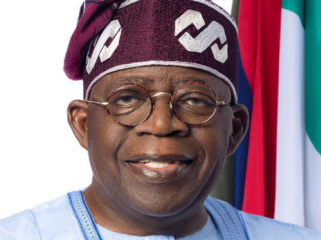
 Analysis6 days ago
Analysis6 days agoNow That Tinubu Has Listened … by Alabidun Shuaib AbdulRahman
-

 News6 days ago
News6 days agoMamdani Poised to Make History as New York’s Youngest, First Muslim Mayor
-

 Analysis6 days ago
Analysis6 days agoJustice for Ochanya Ogbanje, by Boniface Ihiasota
-
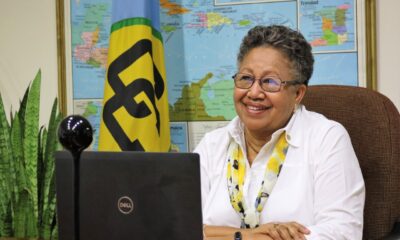
 News6 days ago
News6 days agoCARICOM Seeks Global Support to Tackle Soaring Insurance Costs in Tourism Sector
-

 Business6 days ago
Business6 days agoU.S. Air Travel in Crisis as 13,000 Air Traffic Controllers Work Without Pay Amid Government Shutdown










